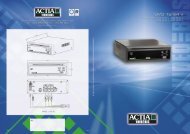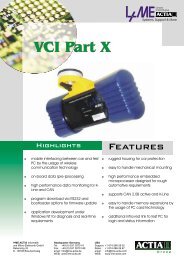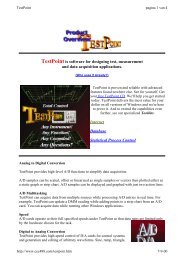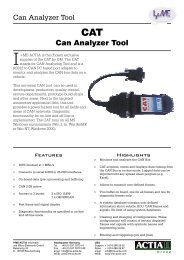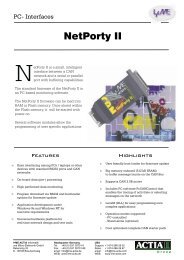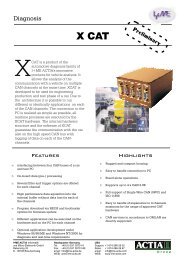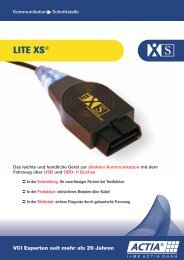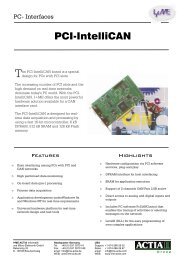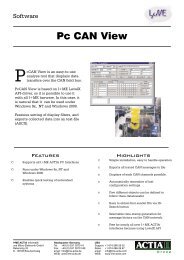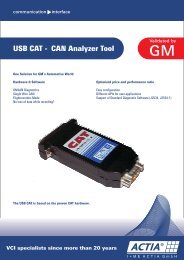User´s Manual - I+ME ACTIA GmbH
User´s Manual - I+ME ACTIA GmbH
User´s Manual - I+ME ACTIA GmbH
You also want an ePaper? Increase the reach of your titles
YUMPU automatically turns print PDFs into web optimized ePapers that Google loves.
Packed Binary Coded Decimal<br />
CAT allows the user to edit or remove already existing Signals assigned to Frames. The user can also<br />
create new Signals using CAT.<br />
CAT can recognize eight different types of signals and allows furthermore often different formats. To<br />
edit or create a Packed Binary Coded Decimal Signal open the Signal Definition window shown below.<br />
Note: If you edit a diagnostic signal assigned to a DPID you see<br />
DPID: instead of Frame: and Byte is default '1'.<br />
Format<br />
A Packed Binary Coded Decimal Signal has always the format BCD.<br />
Position in the Frame<br />
Byte: Describes which Data Byte of the frame is the first one used for this signal. (Starting Byte) Bytes are<br />
counted upwards:<br />
Byte 0 means the signal could be maximal 8 Byte long<br />
Byte 7 would mean that the signal must fit into this single (last) Byte.<br />
Bit: Describes which Bit of the chosen Data Byte is the first one used for this signal. (Starting Bit) Bits are<br />
counted downwards:<br />
Bit 7 means the complete 8 Bits (7 – 0) of the chosen Byte will be used.<br />
Bit 0 would mean to use only Bit 0 of the Byte and then to use Bit 7, 6, ... of the following Byte.<br />
Length: Describes the absolute Length of the signal.<br />
For a packed BCD signal the length is always a multiple of one Byte. (Up to 8 Bytes possible)<br />
See also Data Byte/Bit presentation on the CAN bus.<br />
Note: For DPID signals Byte 0 is already used. So the selectable starting bytes are Byte 1 to 7 and<br />
the maximal length is 7 Bytes.<br />
91




